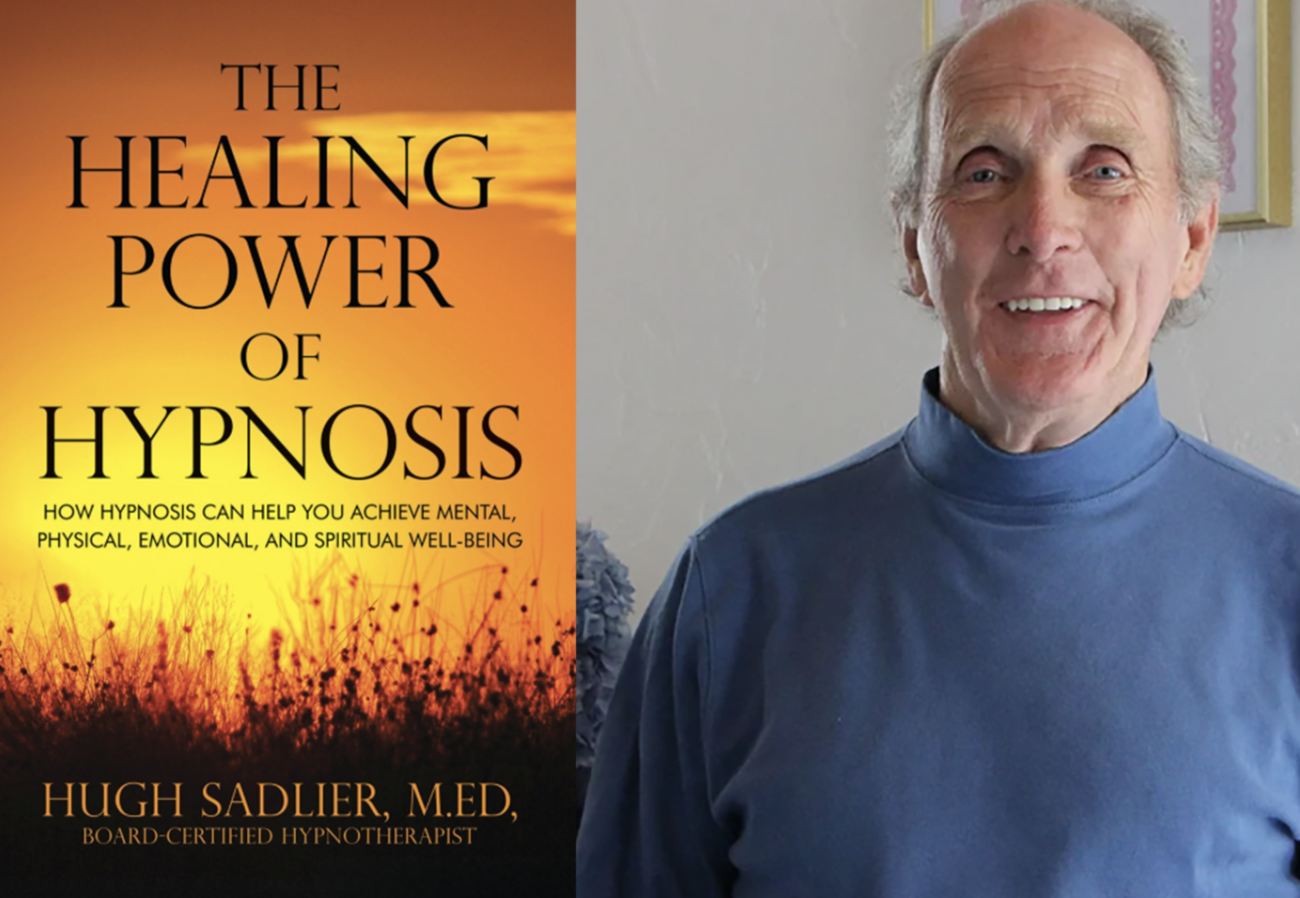Alumnus Believes in Healing Power of Hypnosis

Hugh Sadlier, G'68, authors The Healing Power of Hypnosis.
By: Damon Markiewicz
Hugh Sadlier, G'68, is a board-certified hypnotherapist with more than three decades of experience helping individuals achieve mental, emotional, physical, and spiritual well-being through hypnosis. He is the founder of Hypno-Health, based in Maine, and has worked with more than 4,000 clients on over 300 different issues ranging from anxiety, chronic pain, smoking cessation, and sports performance, to fears, past life regression, stress and weight – to name just a few.
Author of his new book, The Healing Power of Hypnosis, he shares insights and case studies from his practice, showcasing the transformative potential of hypnotherapy. Sadlier has stayed true to a profession dedicated to the art of healing. His remarkable work demonstrates a blend of intelligence, sensibility, and extraordinary understanding of the human psyche.
“My motivation is really about helping people, and that’s the part of me that motivates me the most,” explained Sadlier. “Through hypnosis, I help people make changes in themselves and in their lives that enable them to achieve optimal mental, emotional, physical and spiritual well-being. With my guidance, they gather information from their subconscious minds that helps them understand the roots of the issue they want to resolve. By disconnecting the impact of those earlier experiences, messages, and influences in their lives, they can eliminate the habit that resulted. They can next create a new, positive program that includes all the things they will do and enjoy by being free of the original issue.”
To understand Sadlier’s passion for his current work, one has to go back to the spring of 1964 to appreciate that his curiosity for the profession started at that time. It was a moment that began while hanging out with college friends and enjoying college life.
“My college roommate’s brother joined us for a weekend visit and proclaimed he could hypnotize anyone!” explained Sadlier. “My roommate and I thought hypnosis only involved the use of a swinging pendulum. If our friend, who had been blind since birth, couldn’t see a pendulum, he wouldn’t be able to be hypnotized. He agreed to participate. The “hypnotist” talked our friend into hypnosis and gave him two post-hypnotic suggestions which he followed when fully conscious. My roommate and I had no idea how what happened – happened; it blew us away! I was intrigued by that experience, but back-burned it for twenty-seven years while pursuing various life experiences.”
“Coming out of college, I had my master’s degree in Therapeutic Recreation and Psychology and I was excited to start my career,” explained Sadlier. “I loved my time at Springfield College, and appreciated the connections I was able to make with long-time faculty member Charles F. Weckwerth. I was prepared to venture out into the world and help others, and be willing to experience new adventures.”
Prior to becoming a certified hypnotherapist in 1991, Sadlier spent more than two decades enjoying careers as a therapeutic, recreation specialist at a residential treatment center for emotionally disturbed boys. a high school guidance counselor and director, and a vocational rehabilitation counselor in public and private counseling settings.
The time for a change officially started in 1991 when Sadlier completed his hypnosis training at the Ethical Hypnosis Training Center of Florida. He was granted hypnotherapist certification by The National Guild of Hypnotists, and he has been practicing hypnotherapy regularly since that time. Sadlier also holds the distinctions of board-certified hypnotherapist and complimentary medical hypnotherapist through the National Guild of Hypnotists.
Sadlier’s area of focus is centered around a person’s subconscious reprogramming, and accessing the treasure trove of subconscious information during hypnosis to reframe limiting beliefs, resolve trauma, and optimize well-being.
“Within hypnosis, I ask questions that elicit important information and insights that enable people to release negative influences and replace them with positive outcomes,” explained Sadlier. “Until we go back and relive these emotional experiences, we may continue to live our lives as puppets controlled by the invisible strings of a forgotten past.”
By encouraging people to take an active role in their own healing, Sadlier enables them to acquire a feeling of empowerment because they achieve the results themselves. It’s exciting to see people becoming aware of the power in their subconscious minds and realizing it can help them achieve their goals.”
What sets Sadlier apart is his unique way of perceiving human beings and his steadfast belief in the power of collaboration. He treats each person as a distinct individual, deserving of a customized treatment plan, and demonstrates a belief that he and his, clients are a unified team.
“My hypnosis training prepared me to give voluminous direct suggestions to clients, which were designed to help them achieve their goals,” explained Sadlier. “As I started my practice, I realized the one-size-fits-all-approach certainly worked for some people, but each person was an individual and had their own tapestry of messages, experiences, and influences that had contributed to who and how they had become.”
It's that focus of exploring the individual’s subconscious mind and digging into the person’s treasure trove of everything that occurred in their life, that has Sadlier partnering with the subconscious mind in searching for answers that help foster individual success.
“I discovered that, when asked in hypnosis, the subconscious mind is very willing to help by bringing forward important information that may have previously gone unnoticed or forgotten,” explained Sadlier.
“Hugh’s Four Rs” represent the heart of his practice. An individual must first recognize what has caused the habit to take hold, followed by releasing the impact of the cause. Replacing what has been released with positive thoughts, perceptions and or images is next, followed by reinforcing everything with a personal affirmation from the subconscious mind so it becomes the new habit.
“I stay humble in my practice and research because there are always challenges waiting for you,” explained Sadlier. “My methods are client-centered and blend nicely with the willingness of the person’s subconscious mind to help create wellness. I think readers will enjoy the book because it shares a wide range of real-life client stories that demonstrate how hypnosis can address complex mental, physical, emotional and spiritual issues. These case studies include both historical and cutting-edge-current methods, offering a rich look into evolving techniques.”
Practicing the Humanics philosophy is also very much a focus of why Sadlier has a mission of wanting to help others. He continues to feel a connection with the College, very similar to the connection he strives to make with his clients.
“I really appreciate how Springfield College prepared me for, and opened up life pathways that truly have resonated with me. I always stay committed to the spirit, mind, and body principles, and giving back to the College” described Sadlier. “Helping others is at the root of my practice and writing this book is my way of demystifying hypnosis and helping people realize the tremendous healing power they have in their subconscious minds.”
